What Is a Backlink: Dissected and Explained in Layman’s Terms
How to
Backlink is one of the key ranking factors. Beefing your backlink profile up is a lion’s share of the search engine optimization process. Let’s dive into the basics of what a backlink is and how it helps in promoting your site.
- 1. What Is a Backlink
- 2. Types of Backlinks
- 3. How to Size up the Quality of Donor Website
- 4. How to Check the Quality of Link Donors in Netpeak Checker
- Let’s Recap
1. What Is a Backlink
Backlinks are links that lead to your site from other sites, blogs, and social networks. They are also called ‘inbound links’ or ‘incoming links’. Backlinks are the sign of trustworthiness, credibility, and authority for users. Google values these signs bringing them to the list of the top ranking factors.
To put it even simpler, let me draw an example from real life. You want to watch some TV show, and you feel desperate because you want something grasping but at the same time you hate cliff-hangers. You ask your teammate and she says that ‘Witcher’ is your best fit. So it sounds like a little ‘vote’ for this TV show, and there’s a chance that you’ll consider it.
And this is how it works in SEO. Dashthis website links to our website mentioning our tool in their list. It means that they place a backlink.
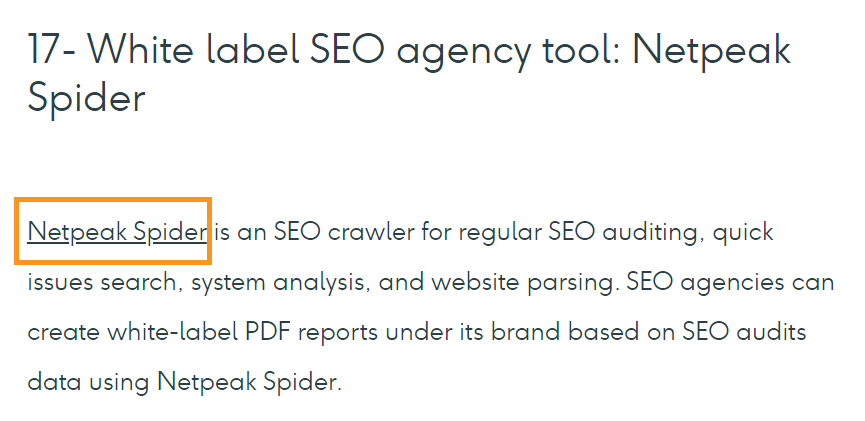
Backlinks have a positive effect on the website rating that, inevitably, results in more visibility in the SERP, or rather, your optimization efforts will go unnoticed if you don't have a backlink profile.
2. Types of Backlinks
Formally, you can break down the backlinks into three types:
- ‘Natural’ editorial links. This type of link must become your fave. The idea is simple: for other sites, users or bloggers to like and link to your site, you need to create really great content. Articles, photos, videos, and the general message should be as informative and relevant as possible.
- Manual ‘outreach’ link building. Such links are typical of modern SEOs. You need to personally contact the owners and moderators of websites, blogs, and groups on social networks to post backlinks on their resources. It’s a subtle, time-consuming but highly beneficial work.
Here's an essential kit for link building. Pin or bookmark these blog posts.
1. Find out where to place your backlinks: '15 Ways to Get Free Backlinks.'
2. Learn more how to outreach: ‘Comprehensive Guide on Guest Blogging (with Actionable Outreach Tips).’
3. Size up the quality of link donor and learn how to analyze those metrics: ‘How to Size Up Quality of Link Donor For Effective Link Building Campaign.’
- Self-created, non-editorial links. It’s a part of black-hat practices. Such backlinks inherently carry less equity than the other types of links. Google recommends not to follow such techniques.
2.1. Nofollow & Dofollow Links
Search engines regularly visit websites by crawling their content. When you leave a dofollow link it flags to search engine robots that they can follow a link and crawl this page.
This is how a dofollow link looks like in code:
As you’ve probably noticed, there’s no such a tag as ‘dofollow’, it’s just a hyperlink that goes behind an anchor text. In the anchor text itself, you place the target keyword.
And what is a nofollow link? Nofollow links are hyperlinks with a rel=“nofollow” tag:
Nofollow links signal search engines they don’t need to follow links. In this case, the link equity of the source (a specific site) is not taken into account. The nofollow tag is as old as the hills, it’s already 14 year-old, and it was created to regulate link mass. Dofollow links are good but a natural-looking backlink profile should be balanced by nofollow links too. Otherwise, you run the risk of getting sanctioned by Google.
In 2019, Google introduced two more link attributes that will bring significant changes to the whole game. It was done to better understand the nature of a particular link. So along with nofollow link attribute meet:
- rel="sponsored" – for paid and sponsored links, they will be used in advertisement
- rel="ugc" – stands for 'user generated content', such as comments on the forums
Rel=“nofollow” tag remains the catchfall for other non-trusted links.
3. How to Size up the Quality of Donor Website
Starting out link building from scratch may seem a daunting task, chiefly because you have no clue where to start from.
Not every backlink is good for promotion. There’re quality and low-grade links. Frankly speaking, conscientious SEOs always strive for the first ones as they know the secret: one quality link is more powerful than a dozen of low-quality.
To evaluate the quality of the backlink, look closely at the website that links to you. Linking to poor-quality or even Google-banned sites may lead to a ranking drop. And even more, you can get under the Google filters. Carefully sift through them to tell apart. Rely on tangible metrics rather than on your gut feeling. Here’re some fundamental ones:
- Traffic. There’re multiple services that calculate the traffic inflow of the website (such as SimilarWeb, Serpstat, etc.). Think twice before placing a link on the website with low volumes of traffic, or the website that has a decreasing traffic tendency.
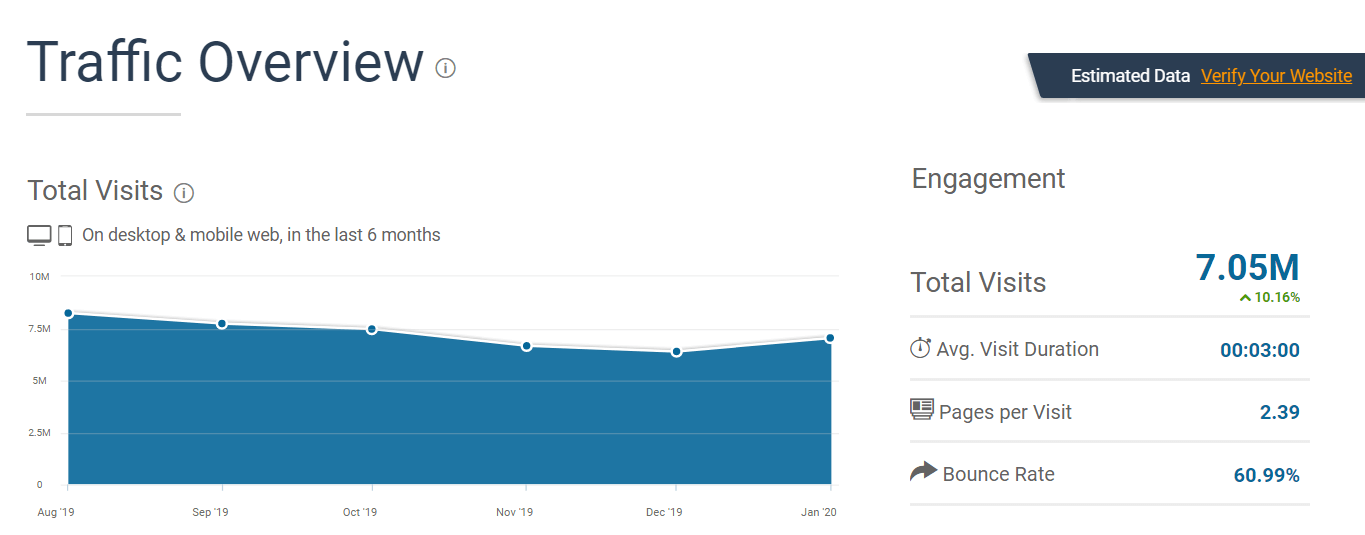
- Domain rating and authority. Google puts a lot of weight to an authoritative domain. You get more link equity from such a website. Such services as Majestic, Moz, Ahrefs, and Serpstat are the first ones when the conversation steers by Trust and Domain Rating checks.

- Index. The pages should be indexed and seen in the SERP. The easiest way to check it is to google it using advanced search operators. For instance, to limit results to a specific site type site:meow.com.
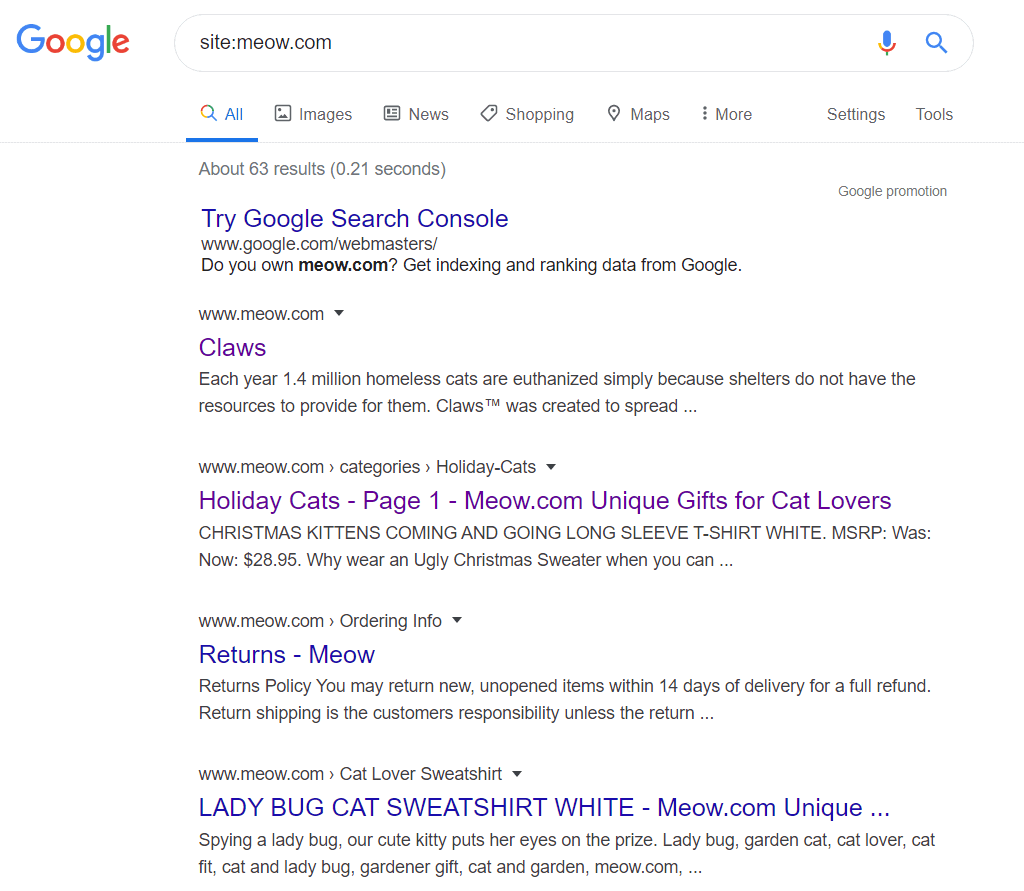
These signs are of no less importance as they follow up the trinity listed above:
- Engagement. Traffic influx is a great thing but what if it's paid traffic, or people come and immediately leave the website because it’s irrelevant, unintelligible or boring? Engagement factors include user’s activity on the page: likes, comments, shares, etc. You can check them manually without any particular service even before visiting SimilarWeb.
- The page linking to you is topically related. Roughly speaking, you can’t place a link to the website selling pink toy piggies if you are a high-brow news hub. Previously, in the old days of SEO, when the internet looked like the Wild West, it was a regular practice: the more links, the better.
- Domain age. Google’s goal is to provide most relevant results to the user. Old domains have been already seen and ranked for some keywords. In general, it’s easier to rank for a keyword on an older domain name than a newer domain name if all things are equal.
- The ratio of outgoing and incoming links. If there are many more outgoing ones, the resource is spammed, and it is better to delete the link from it. Again, check it in Serpstat, or Ahrefs.

4. How to Check the Quality of Link Donors in Netpeak Checker
Now you know the basic checklist that you need to pay attention to in the search for donor sites. All of these metrics can be quickly checked in Netpeak Checker. It’s as simple as that:
- Click on the ‘List of URLs’ tab and enter the list of sites manually or upload them from a file.
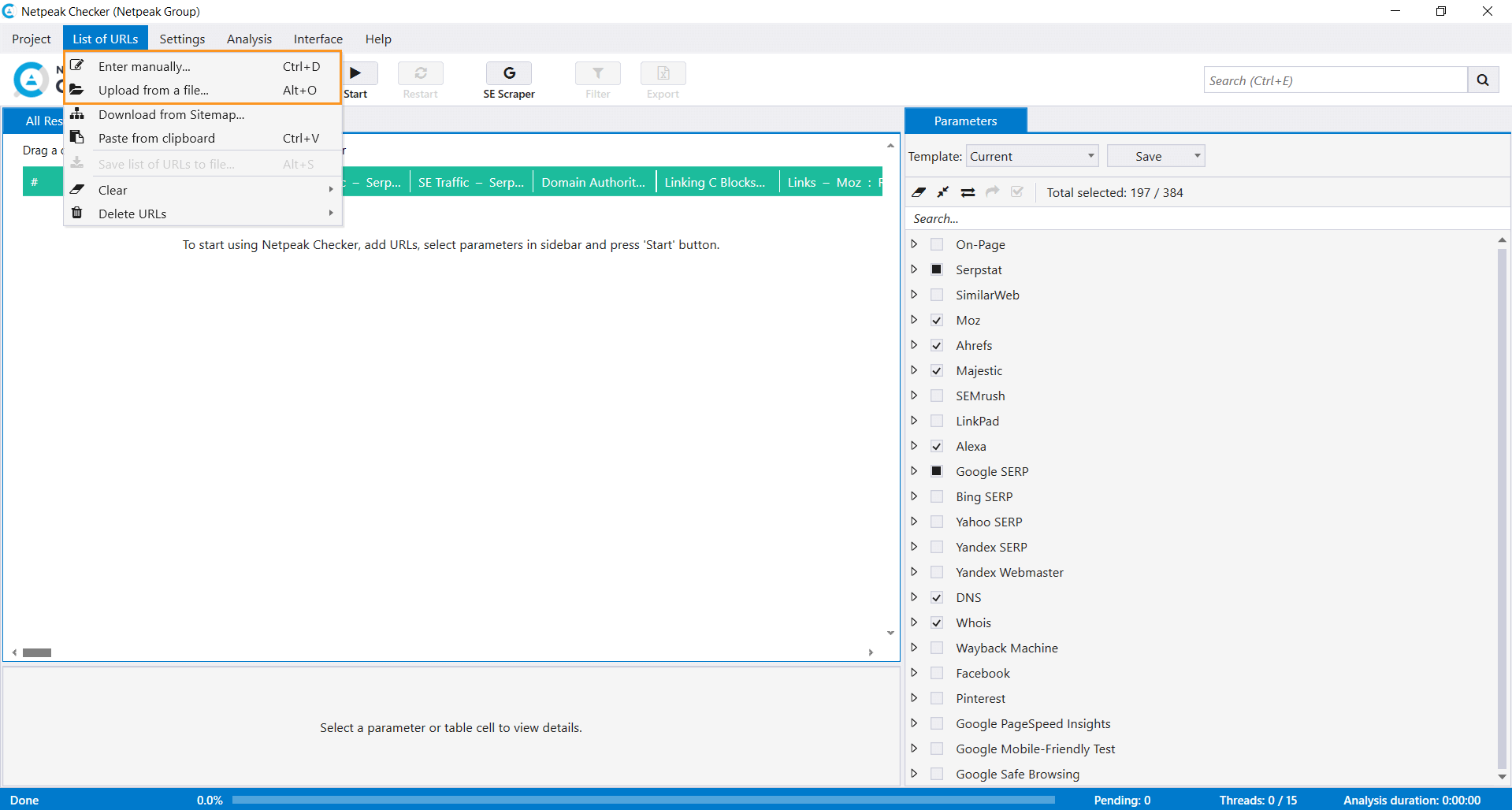
- In the right corner, you’ll see the ‘Parameter’ panel. Here you can specify the needed metrics: Google SERP, Alexa, Majestic, Ahrefs, Serpstat (to see the data from these services you might need API keys and proxies), and many other parameters needed for a comprehensive domain analysis.
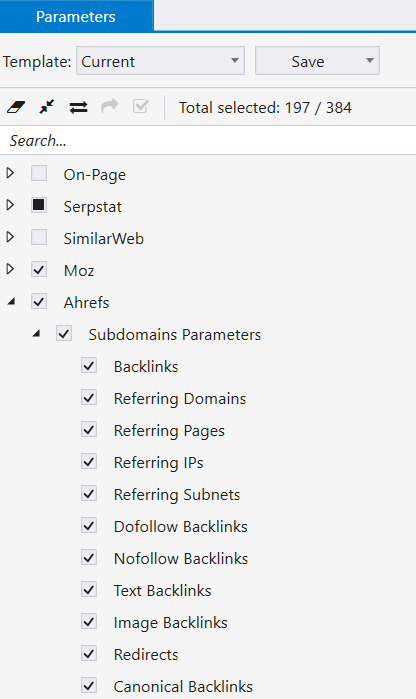
- Next, hit the ‘Start’ button and the program will analyze the list of domains for the selected parameters.
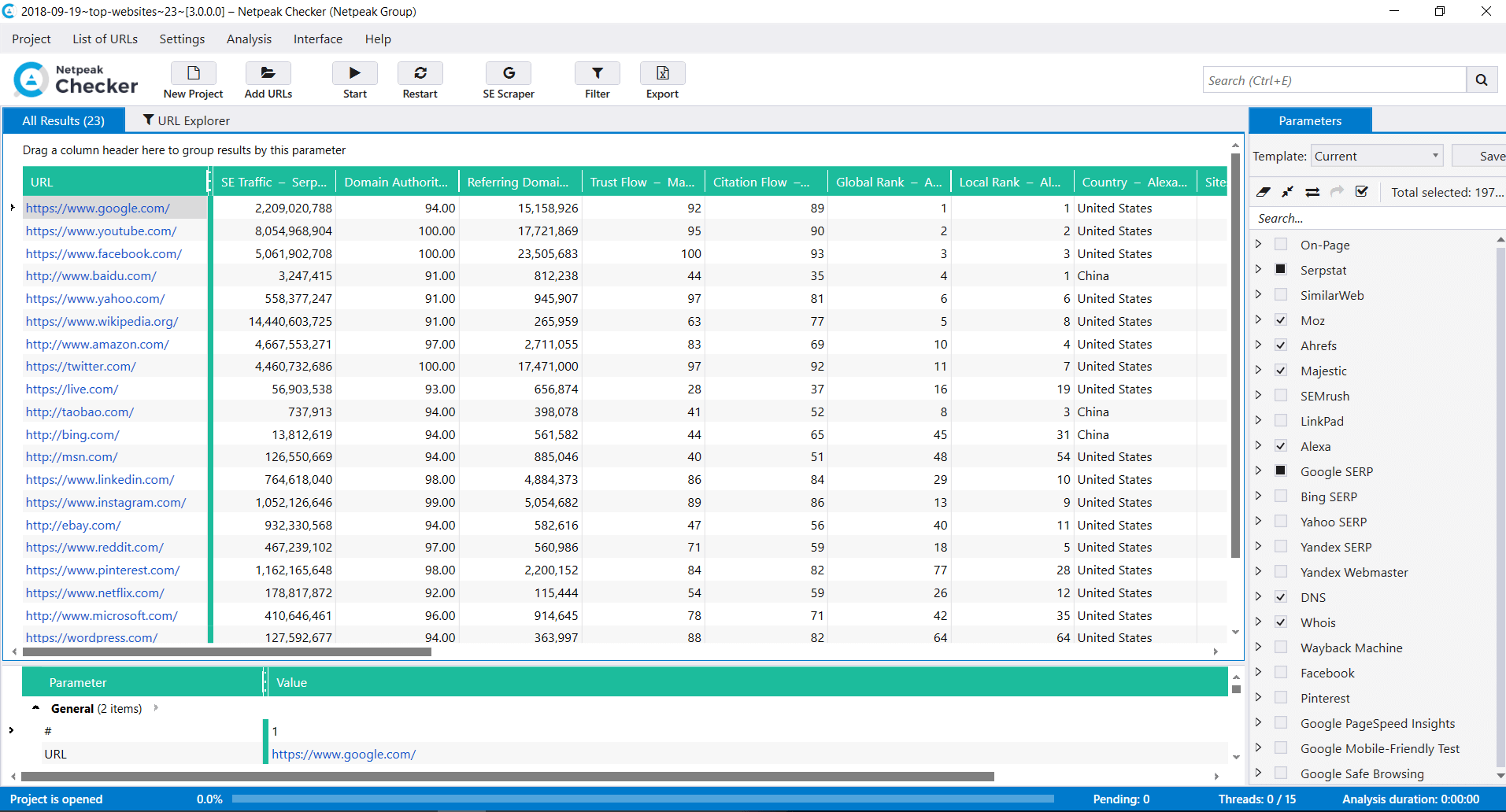
You can check quality of link donors even in the free version of Netpeak Checker that is not limited by the term of use and the number of analyzed URLs. Other basic features are also available in the Freemium version of the program.
To get access to free Netpeak Checker, you just need to sign up, download, and launch the program 😉
Sign Up and Download Freemium Version of Netpeak Checker
P.S. Right after signup, you'll also have the opportunity to try all paid functionality and then compare all our plans and pick the most suitable for you.
Let’s Recap
So, now you know that backlinks are links that lead to your site from other resources, they pass equity and they go side-by-side with everyday SEO optimization. Their quantity and quality determine the effectiveness of SEO-promotion in search engines. There're three types of backlinks:
- ‘Natural’ editorial links. They are given because your content is great and people want to share it in a 'natural' way.
- Manual ‘outreach’ link building. These are SEO links that you place manually on websites, blogs, Q&A forums, etc.
- Self-created, non-editorial links. Google frowns upon these types of links.
Before placing a link, conduct a comprehensive domain analysis. Check out these major metrics:
- Traffic. Check if the website has any activity.
- Domain rating and authority. You'll reap more benefits from an authoritative domain.
- Index. Place the links only on the indexed pages.
There easiest way to check each metric in bundle is to run Netpeak Checker.



